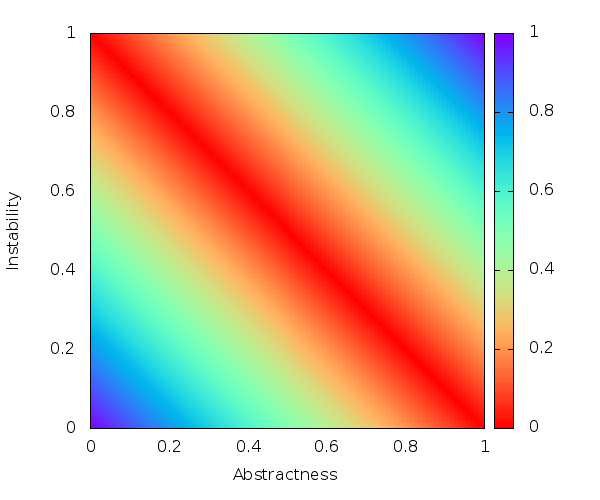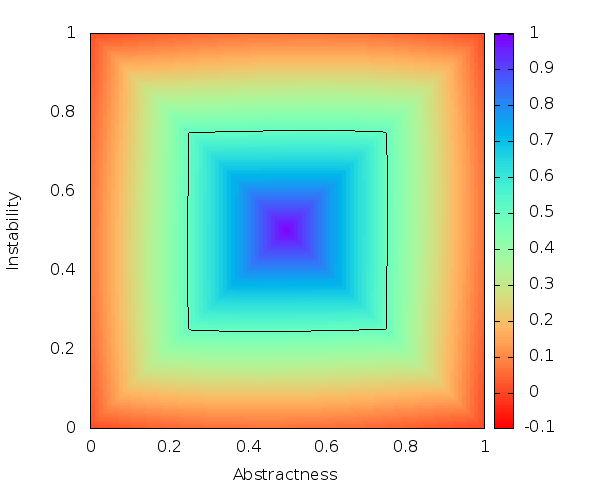Tools such as STAN use a distance function D = A + I – 1 to measure how well a particular package meets the stable-abstractions design principle. In my opinion this measure includes a lot of points in the design space that are not good places. Specifically, I think that packages should fall into the upper left or lower right corners only. This is particularly importaint if we consider the distance function to be a cost function and we are trying to automatically search for good designs. The D function can produces packages that are half abstract and half stable, which I would prefer to avoid.
Instead I propose to use the normalised absolute difference in the distance from the two desirable corners of the design space. Specifically I favour designs which are closer to either the stable-abstract or unstable-concrete corners of the design space, over designs which happen to be near the “main sequence” but are further from the desirable corner. I propose the distance function D’=sqrt(2) – abs(sqrt((1-I)**2 + A**2) – sqrt(I**2 + (1-A)**2))/sqrt(2). This function weighs the desirable corners the highest and provides a watershed so that a search function can converge towards the most desirable part of the design space by cost-minimisation.
Proposed stable-abstractions distance function (D’):
For comparison the original stable-abstractions distance function (D):
To make the difference bettween these two functions concrete: here is a plot of the absolute difference between the functions. The red areas are the areas of most aggreement. You can see that the central disputed area is the area of the design space most affected by the selection of my proposed new function, positive figures are less favoured areas in the proposed D’ function.


